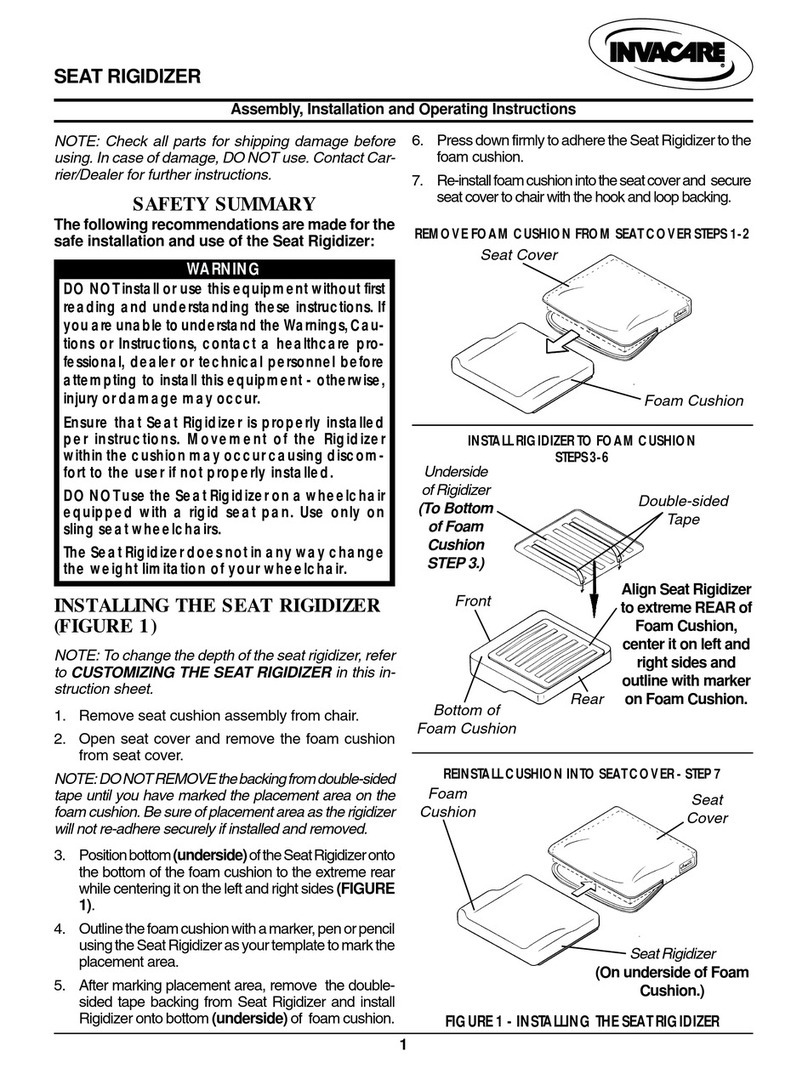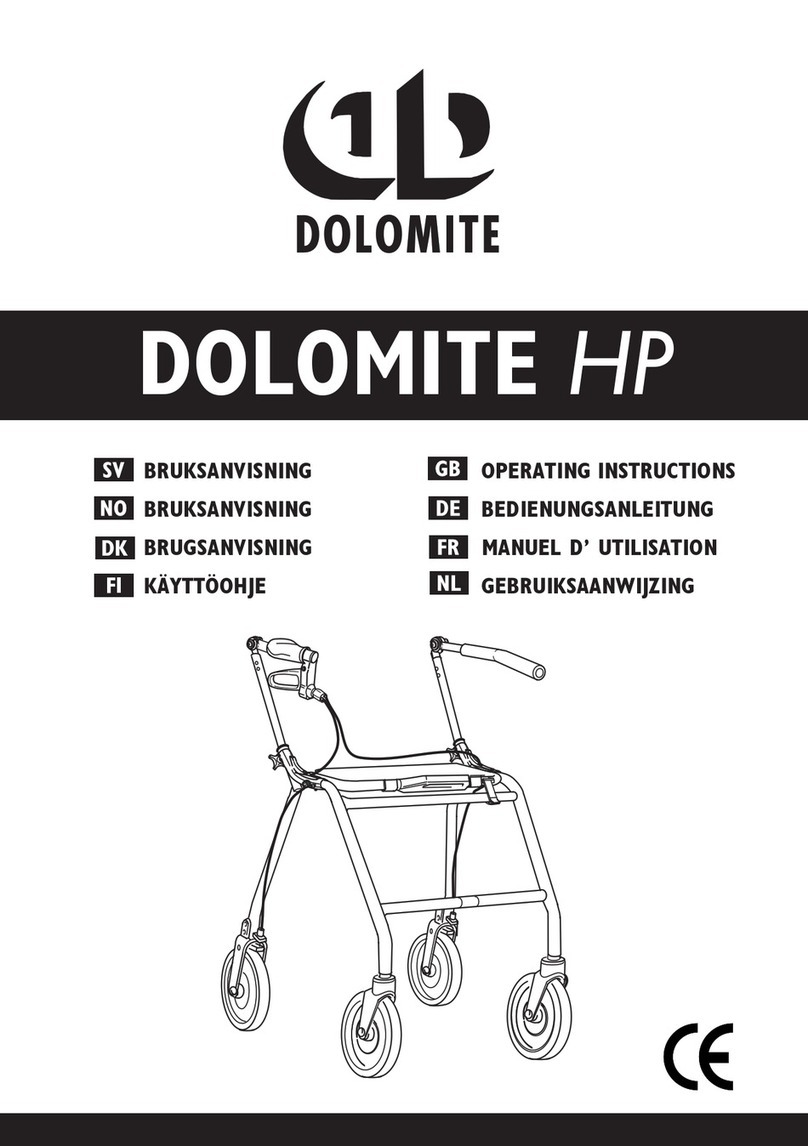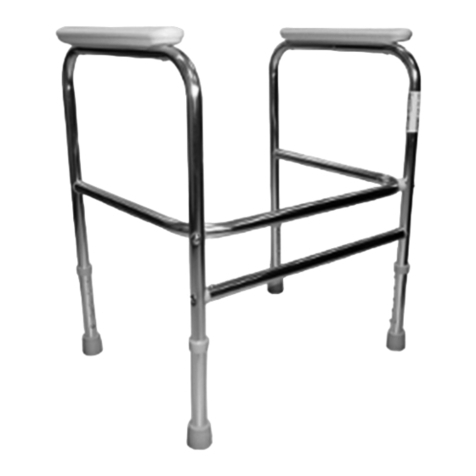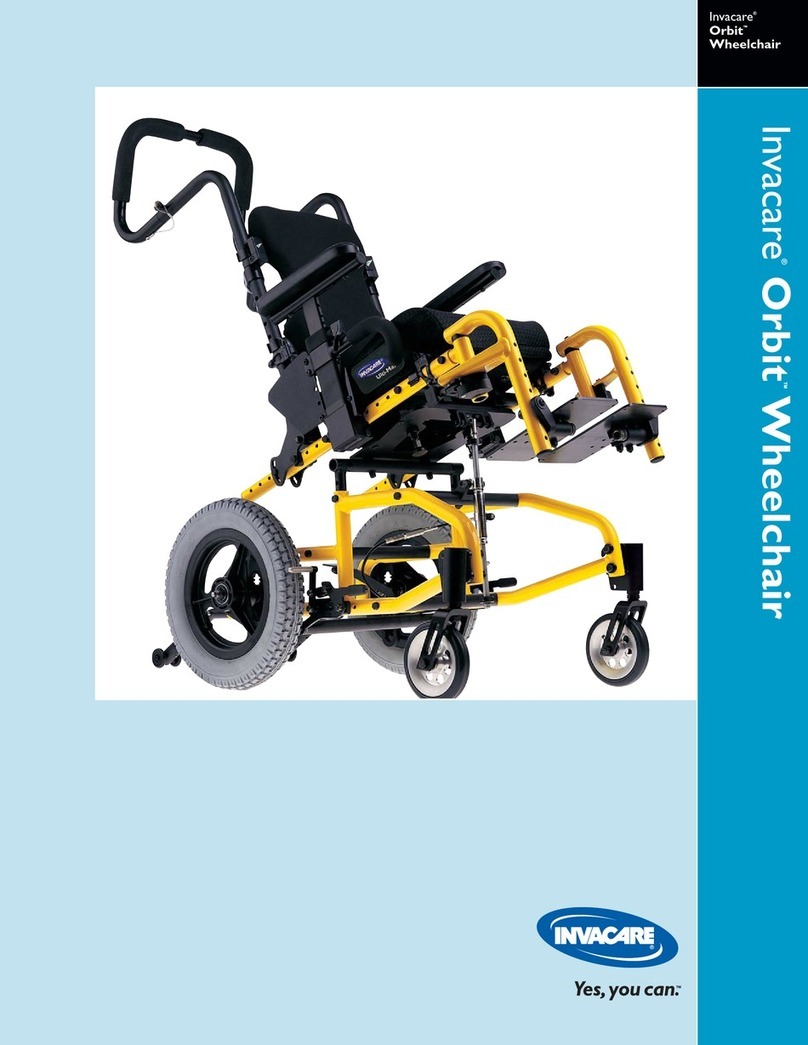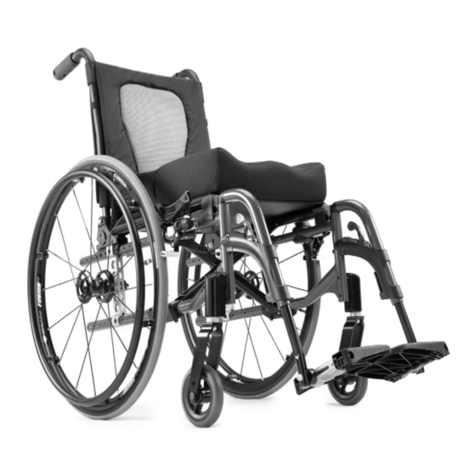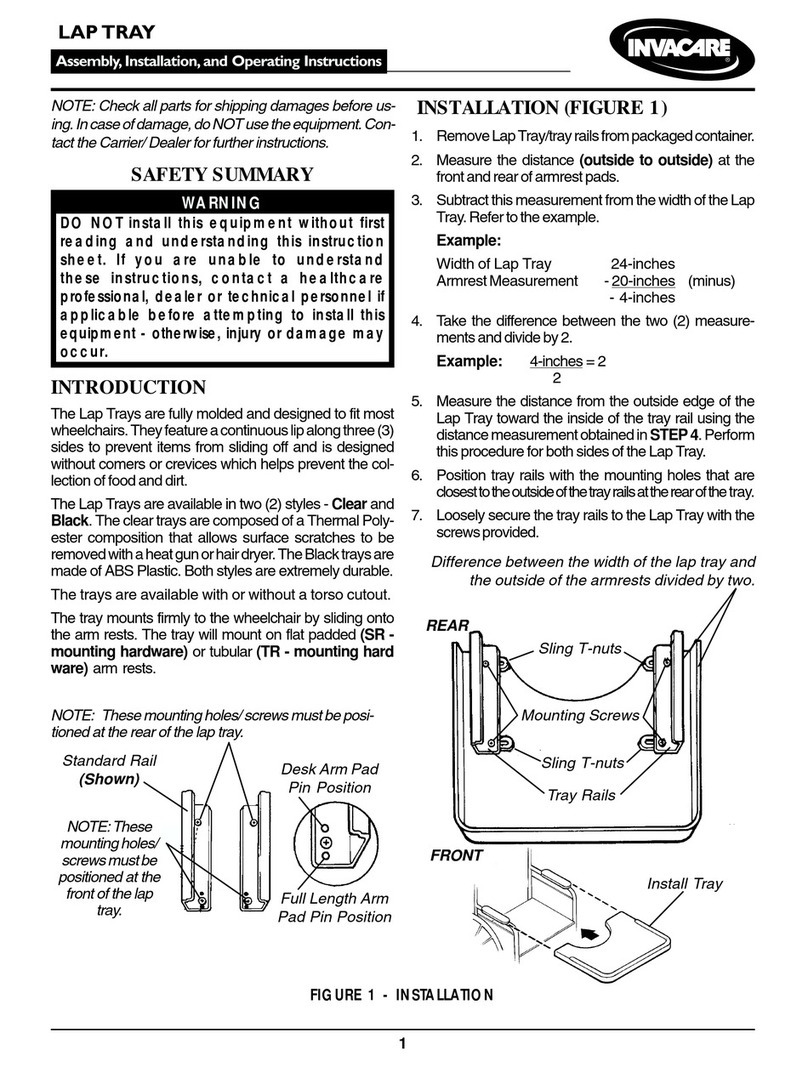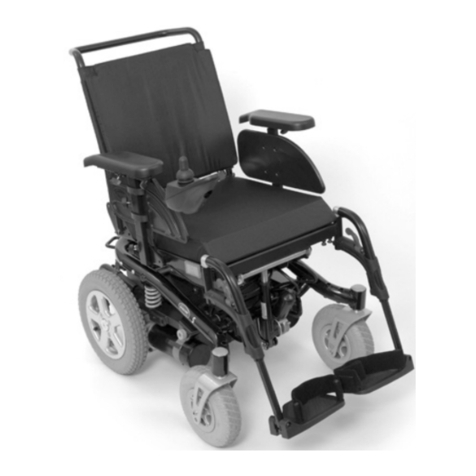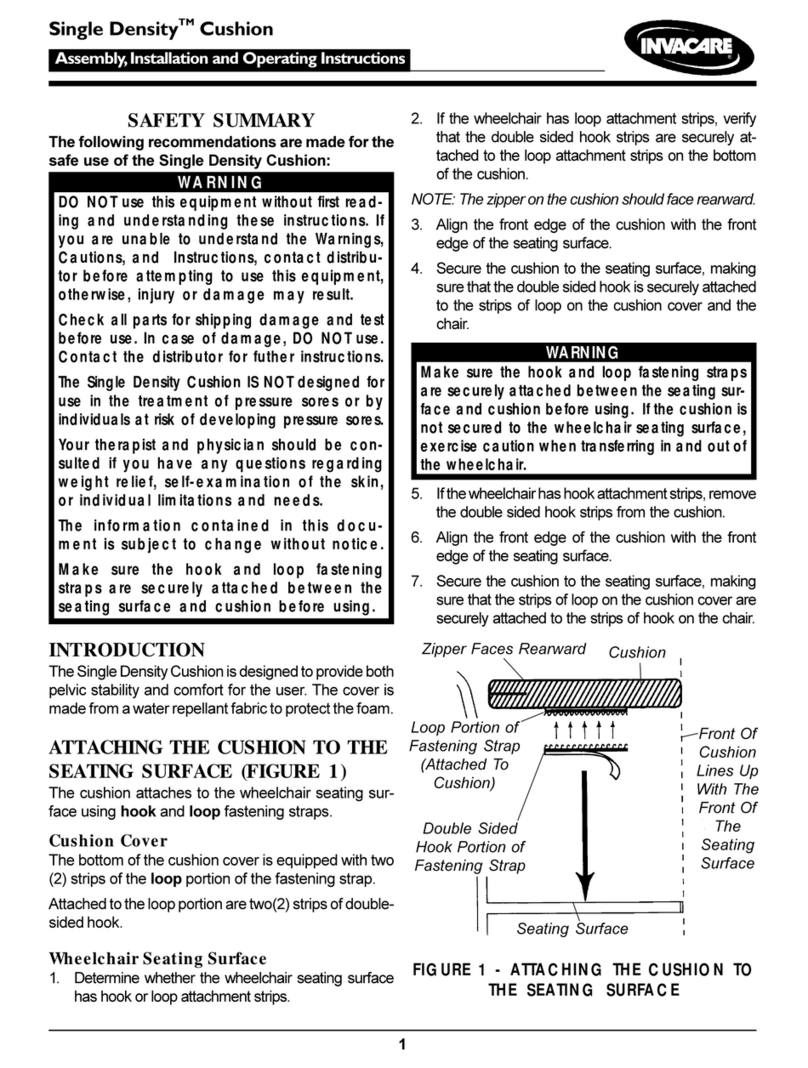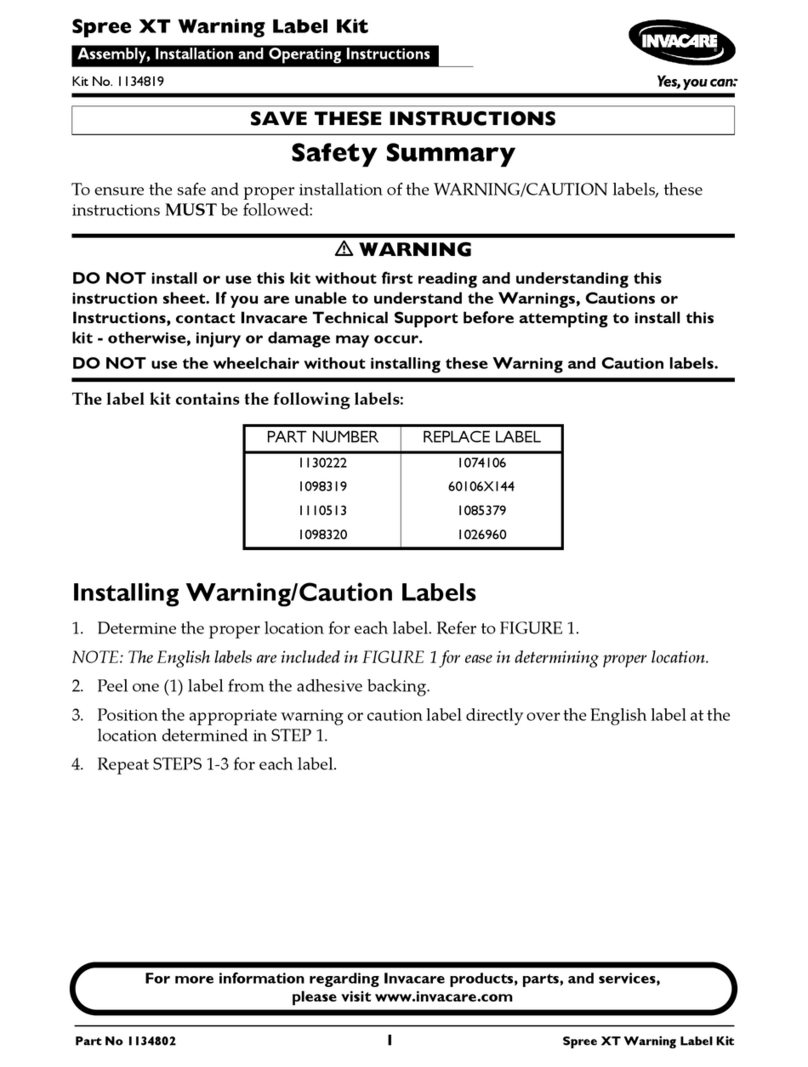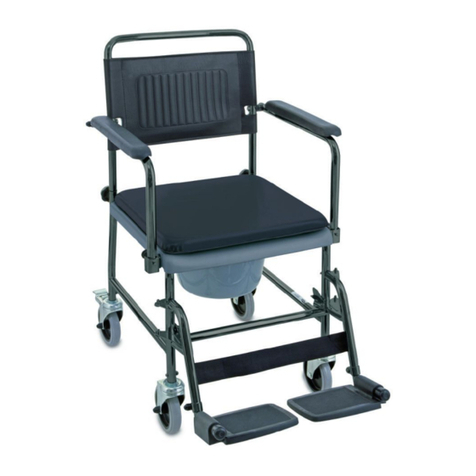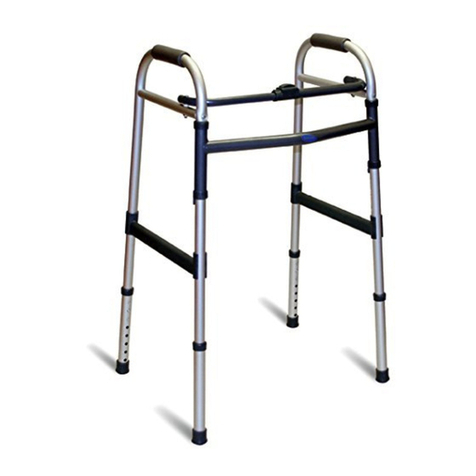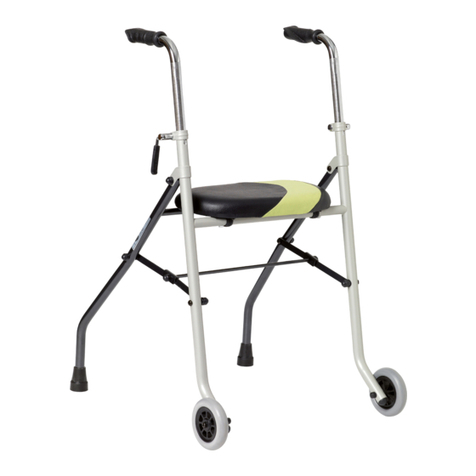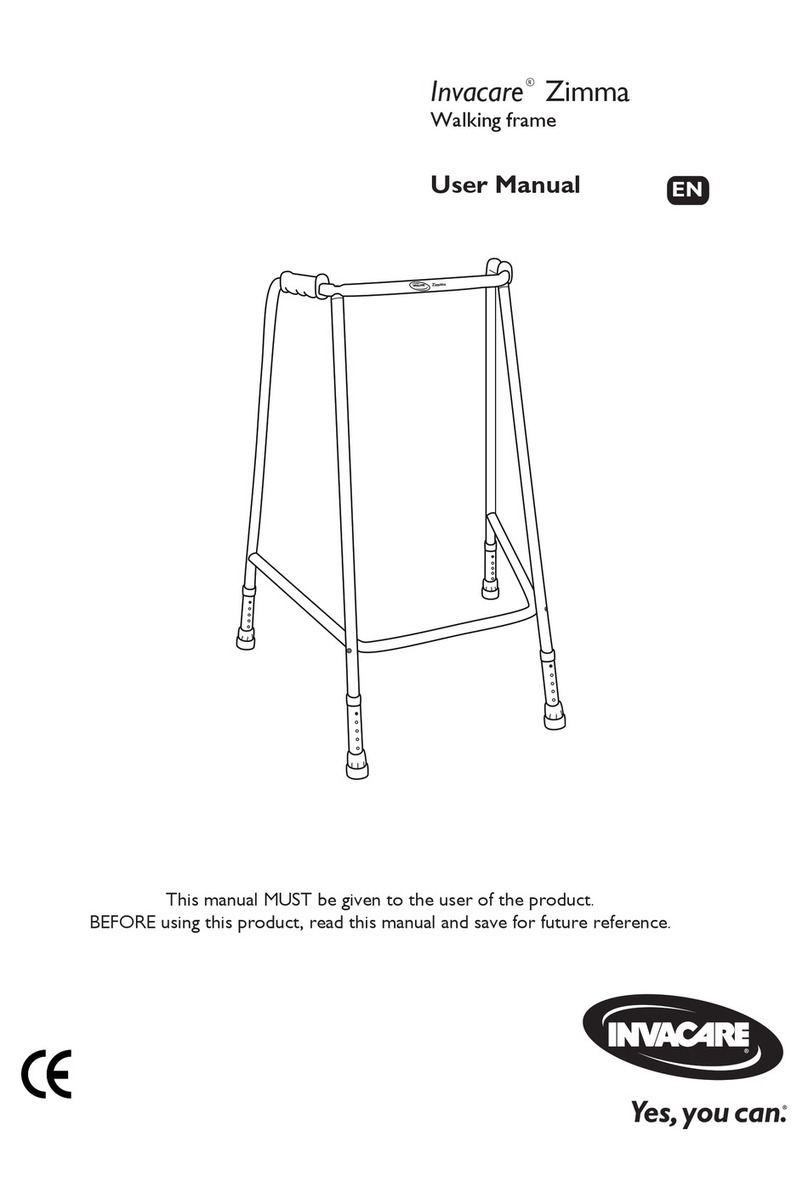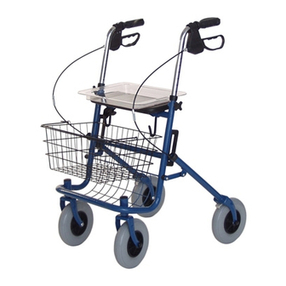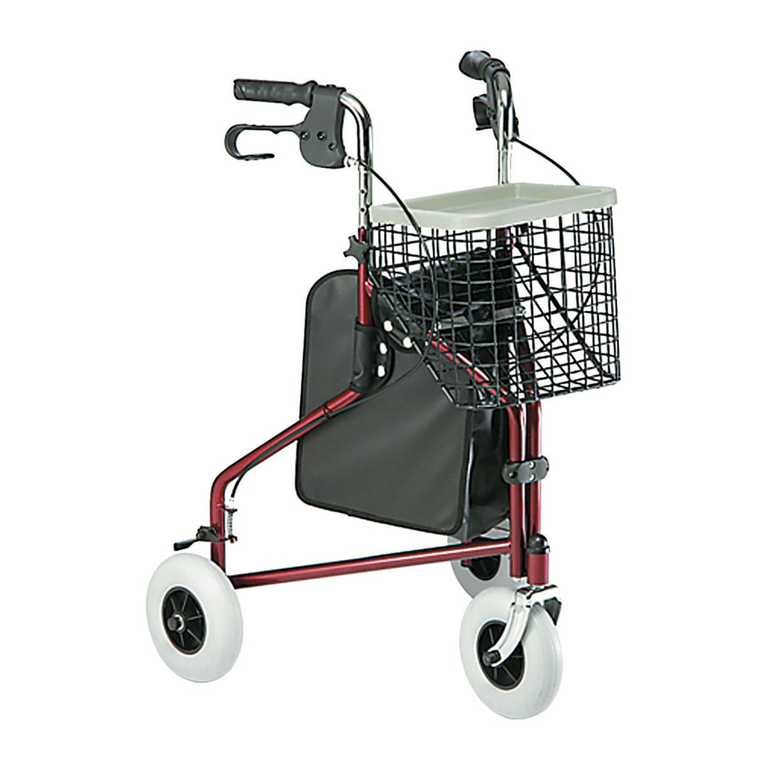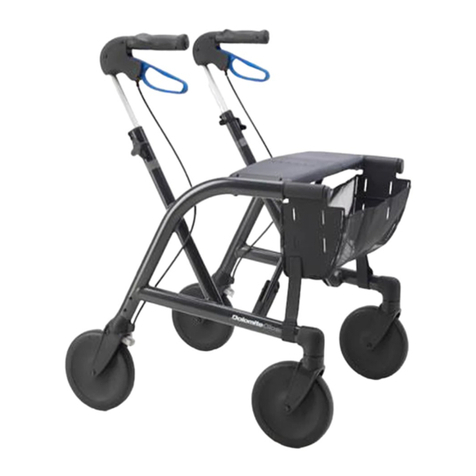
10
TRANSFERRING FROM
T
R
A
N
S
F
E
R
R
I
N
G
F
R
O
M
TRANSFERRING FROM
E. The rear casters are unlocked.
F. Make sure the legs are in the maximum open posi-
tion and the shifter handle is locked in place.
WARNING
When elevated a few inches off the surface be-
ing transferred from and before moving the pa-
tient, check again to make sure that the sling is
properly connected to the attachment points of
thestanduplift.IfanyattachmentsareNOTprop-
erlyinplace,lowerthepatientbackontothesur-
face and correct this problem.
Adjustments for safety and comfort should be
made before moving the patient.
Invacare standing and transport slings are spe-
cifically designed to be used in conjunction with
theInvacareStandUpLift.Slingsandaccessories
designedbyothermanufacturersorotherInvac-
are slings are not to be utilized as a component
of Invacare’s stand up lift system. Use of these
products is prohibited and will void Invacare’s
standupliftwarranty.UseonlygenuineInvacare
standing and transport slings and lift accessories
tomaintainpatientsafetyandproductutility.
Iftransferringfromawheelchair:Wheelchairwheel
locksMUSTbeinthelockedpositionBEFORElow-
eringthepatientintothewheelchair.
3. Transferring from a wheelchair - Lock the wheel locks
of the wheelchair.
4. Press the UP (é) button to raise the patient above
the surface (bed, wheelchair or commode) being trans-
ferred from. The patient should be elevated just high
enough to clear the surface with their weight fully sup-
ported by the lift.
NOTE: The lower center of gravity provides stability mak-
ing the patient feel more secure and the lift easier to move.
NOTE: The lift arms will stay in position until the
DOWN
(ê)
button is pressed.
5. Move the patient to the desired surface. Refer to
MOVING THE PATIENT in this section of the
manual.
LIFTING PREPARATION
Refer to the patient sling Owner’s Manual, 1023891
for complete lifting preparation information.
NOTE: The stand up lift may be operated by one (1)
healthcare professional for ALL lifting preparation, trans-
ferring from and transferring to procedures with a coop-
erative, weight--bearing individual able to support the ma-
jority of his/her own weight. However, since medical con-
ditions vary, Invacare recommends that the healthcare
professional evaluate the need for assistance and deter-
mine whether more than one (1) assistant is appropriate
in each case to safely perform the transfer.
LIFTING THE PATIENT (FIGURE 1)
1. Instruct the patient to do the following:
A. Hold onto the hand grips on both sides of the stand
up lift.
B. Lean back into the standing or transport sling.
WARNING
STANDINGSLINGS-Beforeliftingthepatient,make
sure the bottom edge of the standing sling is po-
sitionedonthelowerbackofthe patient and the
patient'sarmsareoutsidethestandingsling.
TRANSPORT SLINGS - Before lifting the patient,
makesurethebottomedgeof thetransportsling
is at the base of the spine and the patient's arms
are outside the transport sling.
InvacaredoesNOTrecommendlockingtherear
casters of the stand up lift when lifting and trans-
ferringanindividual.Doingsocouldcausethelift
to tip and endanger the patient and assistants.
InvacareDOESrecommendthattherearcasters
be left UNLOCKED during lifting and transferring
procedures to allow the stand up lift to stabilize
itselfwhenthepatientisinitiallyliftedfromandtrans-
ferred to a chair, bed or any stationary object.
2. Make sure of the following:
A. Patient's knees are secure against the knee pad.
B. Patient's feet are positioned on the footplate as
shown in STEP 2B of FIGURE 1.
C. The bottom edge of the:
StandingSlingis positioned on the lower back.
TransportSlingis at the base of the patient's spine.
D. The patient's arms are outside of the standing or
transport sling.

